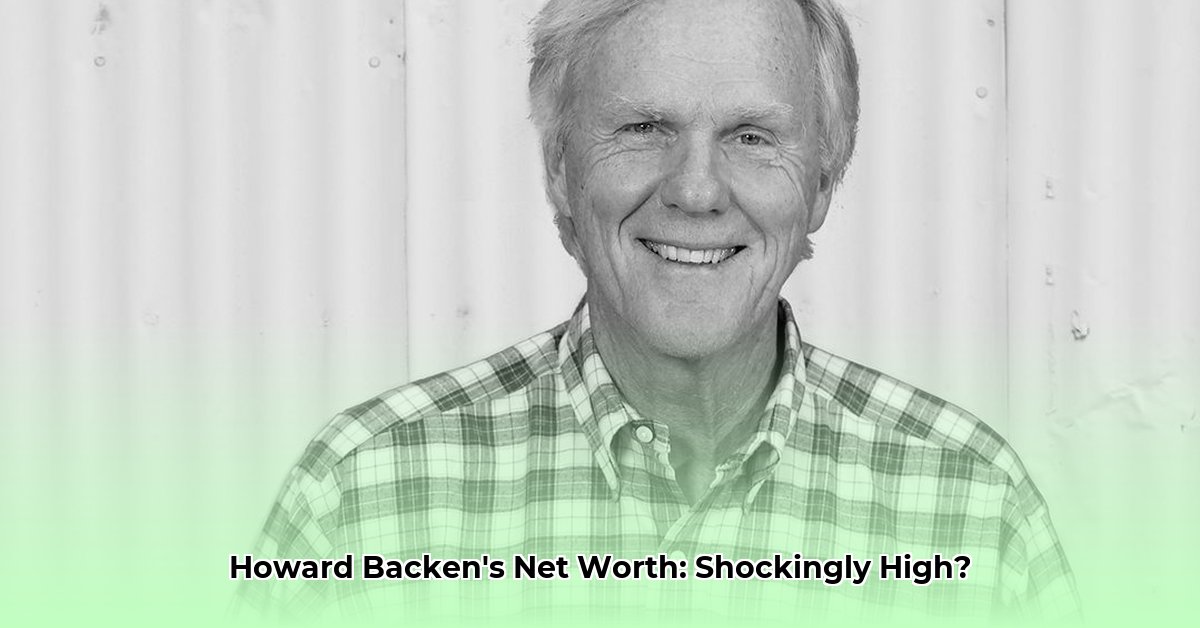
Howard Backen: A Legacy Beyond the Bank Account
Many search online for "Howard Backen net worth," fueled by curiosity about celebrity wealth. While the specifics of his financial success remain private, the truly compelling story lies in Backen's profound impact on sustainable architecture. His work transcends mere monetary value; it represents a legacy of innovative and environmentally conscious design. This article explores the remarkable achievements of this influential architect, showcasing projects that redefine luxury while minimizing environmental impact.
KuKu Farms: Where Luxury Meets Sustainability
Howard Backen's design for Ashton Kutcher and Mila Kunis's KuKu Farms is not just a stunning estate; it's a paradigm shift in sustainable living. This isn't about superficial opulence; it’s about creating a harmonious integration of luxury and environmental responsibility. The home's ingenuity lies in its self-sufficiency: a hidden photovoltaic system exceeds energy needs, a well provides water, and fresh, local produce comes directly from the property's cornfield. KuKu Farms eloquently demonstrates Backen's philosophy: blending elegance with ecological awareness.
Beyond the Balance Sheet: The True Value of Backen's Designs
Let's revisit the initial query: What is Howard Backen's net worth? The precise figure remains undisclosed. However, the scale and prestige of his projects, including those for high-profile clients like Ashton Kutcher and Mila Kunis, implicitly suggest substantial financial success. But Backen’s true worth extends far beyond his bank account. The value of his work lies in its lasting impact on the field of sustainable architecture, inspiring a generation to design more responsibly. Isn't this lasting impact a much more significant measure of success?
Pioneering Sustainable Luxury: A Rising Tide
Backen's influence is undeniable. He's not just building homes; he's shaping the future of architecture, pushing the boundaries of what's possible in sustainable luxury design. His commitment to environmentally conscious practices isn't merely a trend; it's a fundamental principle that permeates his work. This innovative approach is influencing other architects and designers worldwide, prompting a broader shift toward eco-conscious design. This impact ripples through the industry, ultimately benefiting the planet. What greater legacy could one aspire to?
A Legacy Defined by Innovation and Impact
The quest to pinpoint Howard Backen's net worth may remain unanswered – and perhaps that's appropriate. His true worth lies not in a numerical value but in the lasting impact of his visionary designs. Backen’s work showcases a compelling vision: a future where luxury and sustainability are not mutually exclusive, but rather, complementary ideals. This vision inspires us all to reconsider our own impact on the planet and choose designs that reflect both aesthetic excellence and ecological responsibility. That is an invaluable legacy – one far more rewarding than any monetary measure. The future of sustainable architecture is bright indeed, thanks to the innovative work of architects like Howard Backen.
Designing Your Own Sustainable Haven: Practical Steps and Inspiration from Backen
While replicating the grandeur of KuKu Farms might be beyond reach for most, the underlying principles of sustainable design, championed by Howard Backen, are accessible to all. This section outlines practical steps to incorporate eco-conscious elements into your own home, regardless of budget.
Emulating Backen's Ethos: Sustainable Design on a Budget
Backen's designs aren't just aesthetically pleasing; they're cleverly engineered to minimize environmental impact. We can all learn from this approach, focusing on key principles rather than exact replication. It’s about embracing the spirit of sustainable design.
Practical Steps to Eco-Conscious Building:
Prioritize Energy Efficiency: Invest in energy-efficient windows, insulation, and appliances. This reduces long-term energy costs and significantly lowers your carbon footprint.
Embrace Reclaimed & Sustainable Materials: Using reclaimed wood, recycled materials, or sustainably sourced alternatives like bamboo reduces waste and lowers your environmental impact.
Optimize Natural Light & Ventilation: Passive design strategies maximize natural light and ventilation, reducing reliance on artificial lighting and air conditioning.
Smart Landscaping: Strategic landscaping utilizing native plants reduces water consumption and maintenance.
By incorporating these elements, you can create a home that reflects your commitment to sustainability while remaining budget-conscious. The true reward? A more eco-friendly and comfortable home, reflecting your values and inspiring positive change.
Key Takeaways:
- Sustainable design principles are applicable to various budgets.
- Repurposing and recycling materials significantly reduce costs.
- Energy efficiency delivers long-term financial and environmental benefits.
- Passive design strategies enhance comfort and reduce energy consumption.
- Sustainable materials offer an attractive, eco-conscious alternative.